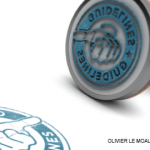The Immune System as Saga
In my opinion, immunology is uniquely prone to mythologization. If you open a textbook of immunology, there are going to be times it reads like an old Norse saga—great, endless battles waged between sentinels and invaders, powerful weapons like NETs (neutrophil extracellular traps) being deployed with dramatic flair, encoded messages carried across great distances via ligand-receptor interactions and so much more. Betrayals (autoimmunity), exiles (clonal deletion) and heroic reinforcements (memory cells) are waiting for their calls to action.
It’s not a stretch to say the metaphors of mythology are baked into our immunological discourse. Even many of our molecules are named after gods and heroes: Janus-associated kinases and the transcription factor Helios are two examples. These nods to mythic characters seem particularly fitting given how these molecules are both invisible, yet extraordinarily potent.
I should reiterate that this metaphorical richness is not a flaw in our understanding. Narrations help us teach, learn and fundamentally empathize. This mythology reminds us that every immunologic interaction is a unique drama in miniature. Like any good saga, we have space to reimagine and reinterpret as we gather newer information. And, perhaps most tantalizing, it brings a sense of curiosity and wonder that within each of us is a saga waiting to be heard.
Why We Tell These Stories
Mythology and superstition serve other purposes too, beyond explaining the unknown. Even in places where we have a decent understanding, we still generate metaphors, narratives and stories. When we talk about “angry” joints, it’s not necessarily that we don’t know about the broad contours of inflammation. Rather, it’s just more poetic to characterize a joint as having emotion. Similarly, when we discuss immunological “tolerance,” we’re developing a story that places a societal value in the context of our own identities.
To put it another way, when I knock on wood in the clinic, I’m only figuratively invoking an ancient superstition about spirits residing in trees to protect us from misfortune. I don’t believe literally that a spirit will come out of the plastic shelving and protect my patient and me. The act of knocking on wood is storytelling, a shorthand to demonstrate solidarity in the face of disease. It also serves as a way to bridge the gap between rationality and ritual. In that gray area, meaning can emerge that transcends conversation.
Incidentally, there’s also something poetic in using a gesture tied to ancient forest spirits to talk about the immune system. Like trees, our immune responses are rooted, branching and interconnected. Like spirits, they are invisible, powerful and equally capable of harm and healing. Sometimes, the old myths find surprising resonance in modern medicine.


